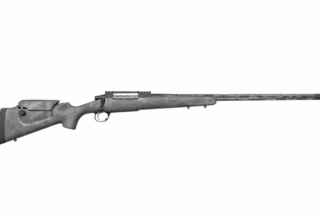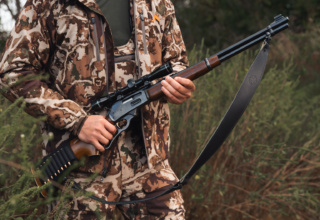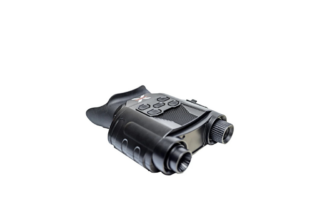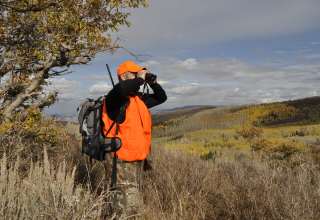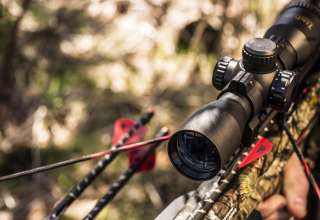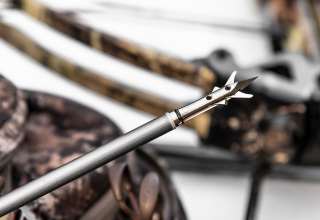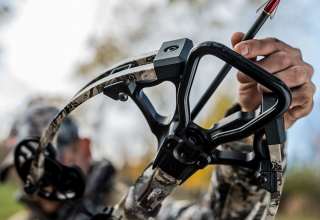Crossbows can be very accurate hunting devices and modern companies are marketing this capability to extreme. It’s common to see print adds talking about one-inch groups at 100 yards… even tight groups at 200 yards. That has industry officials worried about erasing decades of persuasion toward wildlife departments that crossbows are much like compound bows and should be allowed in archery seasons. Clearly, crossbows aren’t rifles.
The Perfect Example
 Shooting at live animals in a hunting situation is categorically different than punching holes in paper targets or shooting for score on a 3-D range. Animals move unpredictably and no person on earth has a better example of that then me. Last year I attempted to fulfill a life-long dream by downing a Cape buffalo with a crossbow. Hunting from a tree stand, the bull stood broadside at 12 yards. In the time it took to aim, squeeze, and impact the animal moved enough to go from vitals to a non-lethal hit. All equipment functioned as expected… the buffalo did not. If a 2,000-pound animal can foil a shot at 12 yards, what can a person expect at 100 yards? If you’d like to see how quickly a hunt can change, watch this. Yes, I paid the $10,000 wounding fee.
Shooting at live animals in a hunting situation is categorically different than punching holes in paper targets or shooting for score on a 3-D range. Animals move unpredictably and no person on earth has a better example of that then me. Last year I attempted to fulfill a life-long dream by downing a Cape buffalo with a crossbow. Hunting from a tree stand, the bull stood broadside at 12 yards. In the time it took to aim, squeeze, and impact the animal moved enough to go from vitals to a non-lethal hit. All equipment functioned as expected… the buffalo did not. If a 2,000-pound animal can foil a shot at 12 yards, what can a person expect at 100 yards? If you’d like to see how quickly a hunt can change, watch this. Yes, I paid the $10,000 wounding fee.
Comparing Against Rifles
Crossbows have a stock, a scope, trigger, a forend, a barrel (or rail) and may look like a rifle. However, performance is dramatically different. An average modern crossbow launches a 400-grain arrow at 350 fps and strikes with about 100 ft-lbs of kinetic energy at 20 yards. A 30-06 bullet fired from a modern rifle travels nearly 3,000 fps striking with more than a ton of kinetic energy at 100 yards. More importantly, the bullet goes from rifle to impact in a fraction of a second and the bullet strikes where aimed. A crossbow arrow will require several full seconds to travel 100 yards and the aim would be approximately 10-feet above the target.
Personal Judgement is Critical
 Long range shooting is fun, there’s no doubting that, yet it’s important for hunters and the industry to separate stationary targets from hunting situations. Get a group of archers together, vertical or horizontal, and it won’t be long until a long-range challenge is cast.
Long range shooting is fun, there’s no doubting that, yet it’s important for hunters and the industry to separate stationary targets from hunting situations. Get a group of archers together, vertical or horizontal, and it won’t be long until a long-range challenge is cast.
Additionally, shooting beyond your expected shooting range is an important training element for bowhunters. If you plan to shoot at 40 yards, you should practice with the same gear at 50 or 60 yards. As you build long range skills, you enhance your confidence and accuracy at closer range.
How Far is Too Far?
 Placing a cap on a shooting distance can be arbitrary depending upon the animal, weather conditions, shooting stance, and a host of other factors. Todd Bromley, Editor of Crossbow Magazine is quick to say that 40-yards is the maximum shot a crossbow hunter should shoot at live game. Most of his readers and recreational hunters across the country are whitetail deer hunters and even 40 yards can be a mind field of twigs, branches, and the ever unpredictability of a nervous whitetail.
Placing a cap on a shooting distance can be arbitrary depending upon the animal, weather conditions, shooting stance, and a host of other factors. Todd Bromley, Editor of Crossbow Magazine is quick to say that 40-yards is the maximum shot a crossbow hunter should shoot at live game. Most of his readers and recreational hunters across the country are whitetail deer hunters and even 40 yards can be a mind field of twigs, branches, and the ever unpredictability of a nervous whitetail.
Hunters must not only be vigilant of distance but of their own abilities. Hunting practice should be done in realistic conditions, not just from a bench or rest position. Sure, hunters want as much steadiness in their crossbow as they can get, but that’s not often practical. Just like vertical archers practice shooting “off-hand” at various distances, crossbow hunters should too. This means practicing at 27 yards, 32 yards, 13 yards, and other unknown distances on a 3-D target that will show the impact of the shot.
Ethical hunting requires a hunter to be at the top of his or her game. With center-fire, vertical or horizontal equipment, consistent practice will demonstrate an ethical range. When a shot isn’t near certain, it’s too far. Establish a solid practice regimen and you’ll learn your limits.
- Long Range Hunting - January 9, 2019
- Travel Smarter with Crossbows - November 24, 2018
- Portable Ambush Blind – The NAP Mantis - September 7, 2018


